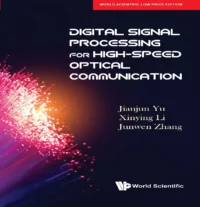Digital Processing of Random Oscillations:
Original price was: ₹11359.00.₹8860.00Current price is: ₹8860.00.
2 in stock
| Author | Viaches, Karmalita |
|---|---|
| ISBN | 9783110625004 |
| Published Language | English |
| Publication Year | 2019 |
| Publisher | De Gruyter |
| Binding | Hardback |
| Original Price | €119.95 |
| Pages | 90 |
| Ships By | 2-3 days |
Description
This book deals with the autoregressive method for digital processing of random oscillations. The method is based on a one-to-one transformation of the numeric factors of the Yule series model to linear elastic system characteristics. This parametric approach allowed to develop a formal processing procedure from the experimental data to obtain estimates of logarithmic decrement and natural frequency of random oscillations. A straightforward mathematical description of the procedure makes it possible to optimize a discretization of oscillation realizations providing efficient estimates. The derived analytical expressions for confidence intervals of estimates enable a priori evaluation of their accuracy. Experimental validation of the method is also provided. Statistical applications for the analysis of mechanical systems arise from the fact that the loads experienced by machineries and various structures often cannot be described by deterministic vibration theory. Therefore, a sufficient description of real oscillatory processes (vibrations) calls for the use of random functions. In engineering practice, the linear vibration theory (modeling phenomena by common linear differential equations) is generally used. This theory?s fundamental concepts such as natural frequency, oscillation decrement, resonance, etc. are credited for its wide use in different technical tasks. In technical applications two types of research tasks exist: direct and inverse. The former allows to determine stochastic characteristics of the system output X(t) resulting from a random process E(t) when the object model is considered known. The direct task enables to evaluate the effect of an operational environment on the designed object and to predict its operation under various loads. The inverse task is aimed at evaluating the object model on known processes E(t) and X(t), i.e. finding model (equations) factors. This task is usually met at the tests of prototyp
Additional information
| Weight | 0.341 kg |
|---|---|
| Dimensions | 24 × 17 cm |
| Author | |
| ISBN | |
| Published Language | |
| Publication Year | |
| Publisher | |
| Binding | |
| Original Price | |
| Pages | 90 |
| Ships By | 2-3 days |






